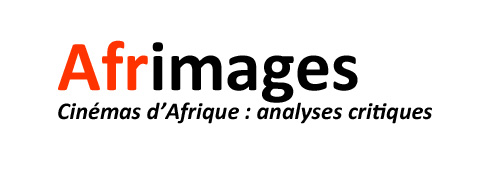Olivier Barlet : Faya Dayi is a very labyrinthical film, a kind of mosaic, a kaleidoscope. How did you construct such a film?

Jessica Beshir, photo Ager Oueslati, festival cinémas d’Afrique de Lausanne 2022
Jessica Beshir : Everything was a process. It took about 10 years for me to finish this film, from the inception of it. I grew up in Harar but returning after a long time required me to learn about the place again. I interviewed so many people. I interviewed scholars from Haramaya University which is the biggest and the most important agriculture university in the country and is right next to the lake Haramaya which is now the dead lake. So, from their friends and just people in the trade, some of the biggest traders of khat. Because one thing is to understand that khat has become an economic fact, it’s visible to the eye, when you pass by those markets you see it, it’s not difficult to understand, but most importantly for me, I wanted to understand how that is tugging at the social fabric. I started to do that and meet more people and enter more intimate spaces, especially because we created long relationships with all of these people throughout the years. You create a certain trust just because I am that person that returns over and over and over.
So, I started to have this: there are many realizations and how everything is connected when we are speaking about Sufi. You see life refracted and, however, here, everything revolves around the khat. It’s like a ricochet of actions and reactions and consequences obviously. We are talking about many things: of course, we are talking about the economy of khat, how it has become a big thing, about addiction, about employment, unemployment, about the youth and their perspective over the khat. The fact that ultimately, ironically, even though it is considered this leaf that makes you waste time, and yet that is the only employment that is abundant in the area.
So, the realization of how everything is connected truly. Because yes, I was searching very much in form, I was very interested in the form. My search was to find a way where all of these physical and social manifestations of the plant: economical, social, political manifestations of the plant. How are they interconnecting with each other, how are they speaking with each other. I was also taking into consideration Jugol, which is the labyrinthic city, the closed city where a lot of the Sufis, Muslims, reside. Speaking with them a lot, they say how that labyrinth is, in a way, it’s kind of a true reflection of life because you think you know what’s about to happen but you don’t because it’s a labyrinth. You can’t see one straight line: the moment you turn right you don’t know what you’re about to meet. So, there was the notion of entering and exiting the space and considering the film as that one living being. It was definitely a formal way of speaking of this and also thinking about merkhana, because, ultimately, it’s not even the leaf, is about merkhana which is that state. And what is merkhana? A lot of them will tell you that it is something that releases you from the tyranny and the weight of the time and the space that creates certain anxiety. So, how do I bring that to the form, especially in cinema where we can use the plasticity of time? For me, it was a very exciting possibility thinking about times, memory, desire, present, all of those things. If the merkhana releases you from that gravity, then, that means that you are everywhere. That is precisely how it feels because I have to chew to understand what we are talking about, and it felt very much like a lucid dream. I know it feels very aesthetic but I literally was thinking how do I bring this into the language of the film, instead of somebody could come and say “well…”, and explain that to you in a talking head, but what’s the point? For me, I wasn’t even thinking about documentary, I was thinking about cinema.
Was khat the center point?
 Yes, because when I first returned, I went to Adis and then, from there I decided to drive, it’s about a 13-hour drive. I loved that drive because I made that drive in the past many times. You start seeing the changes of color, especially in Ethiopia, we have about 18 ethnic groups, language groups. You drive 2 hours and there is a whole different language, a whole different group. So, you start seeing the changes until you arrive. And to me, one of the things that was so visually, especially visually impactful was there were no longer those big fields of teff or sorghum which are stapled foods, stapled greens of the country. Coffee…no. It was khat, it was green blankets and blankets and never-ending blankets. So, returning for the first time, that was the first thing that shocked me a little bit. Of course, you go to Harar, it is the economic force. Life and economy evolved around it. For me, I would have many questions like: “Wow, when did this happen?”.
Yes, because when I first returned, I went to Adis and then, from there I decided to drive, it’s about a 13-hour drive. I loved that drive because I made that drive in the past many times. You start seeing the changes of color, especially in Ethiopia, we have about 18 ethnic groups, language groups. You drive 2 hours and there is a whole different language, a whole different group. So, you start seeing the changes until you arrive. And to me, one of the things that was so visually, especially visually impactful was there were no longer those big fields of teff or sorghum which are stapled foods, stapled greens of the country. Coffee…no. It was khat, it was green blankets and blankets and never-ending blankets. So, returning for the first time, that was the first thing that shocked me a little bit. Of course, you go to Harar, it is the economic force. Life and economy evolved around it. For me, I would have many questions like: “Wow, when did this happen?”.
I grew up with khat around me, because it’s been there for centuries, but I have never seen it to such an extent and so, I had many questions: “What happened”, “What happened to the coffee?”. The farmer can no longer sustain it. That’s when I started going to Haramaya University. I met the president and he introduced me to Doctor Abdullatif, the head of the khat research department. So, I spent many days learning about it. He is from the area. All of his ancestors have been khat chewers and he is the first one in his family that has gone into education and become a doctor, he did his PhD at this university. From the conversations that I was having, a lot of these ideas that he was teaching me about, and after interviewing so many people I decided to go into the field and to the farms. Once I started to go to the farms, I would see with my own eyes all of the ideas that we have been discussing. I see it visually. So, for me, cinema is: if you can show it, why tell it? That’s how it started, but it started after a long process of learning about the dynamics of the social, economic, and politics as well.
You show the whole chain from the agriculture to the commerce of the khat.
Yes! I felt that was the backbone of the film. That was the backbone of the film because I followed the plant from harvest to packaging in a big factory that hires over 1500 people. That is what I am saying, it is employment to the people. What can a statistic do for you that these images won’t? You’re seeing the reality of it. So, that’s how I was approaching it.
You show an industry as well as a health and social issue, but on the other side, it is a gift of God!
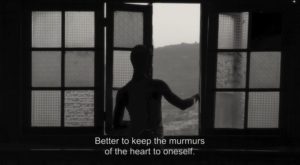 It is contradictory. These are co-existing realities and to me that’s what I wanted. I wanted to bring all of these coexisting realities because there is no one side of it. You can make another 50 films of khat, it will never end. This is just a point of view. My thing was how to bring this sensation of living here, how do you bring it into the cinema, how do you bring it into the film, how do you transmit this sensation of being here, because there is a huge spirituality, it is a strong spiritual space. If you go to Jugol Harar it’s one of the most, if not the third or the second most important Muslim scholarship towns of the whole Africa. This is a very significant Muslim practicing space. Very spiritual all around and Sufi.
It is contradictory. These are co-existing realities and to me that’s what I wanted. I wanted to bring all of these coexisting realities because there is no one side of it. You can make another 50 films of khat, it will never end. This is just a point of view. My thing was how to bring this sensation of living here, how do you bring it into the cinema, how do you bring it into the film, how do you transmit this sensation of being here, because there is a huge spirituality, it is a strong spiritual space. If you go to Jugol Harar it’s one of the most, if not the third or the second most important Muslim scholarship towns of the whole Africa. This is a very significant Muslim practicing space. Very spiritual all around and Sufi.
And khat is accepted.
And there are Sufis. The Sufis are poets. It is not very difficult to go around and find someone that will quote you Rumi and Hafiz, it’s not difficult. These are those people and those are the realms in which they live, they operate. You walk around and everything is “Insha’Allah” because you don’t know what is going to happen when you turn around. And, the truth is that I wanted to contextualize this plant within its spiritual genesis because that is how it started. It started with the Sufi Imams chewing to connect, to get closer to the creator, like all sacred plants in the world. It’s the relationship that humans have had with sacred plants: peyote, hongos, coca. This is the way that’s coming from Harar; it has historically been a sacred place. I’ve always known that but I didn’t know about the story of Azurkherlaini. So, one day, we were hanging out with the Sufis and it is not just “you go and do it in the closet”: this is a social ritual. I wanted to be in the ritual. And this is a ritual in which you make du’as and prayers before you start the chewing. I’ve heard every time you make du’a “Khedir, Elias, Azurkherlaini…”. I heard this so many times, but one day it occurred to me “who are these people?”, “Who are the Azurkherlaini, Elias, Khedir…?”, and when I asked, they said “you say you are making a documentary and you don’t know the father of khat, Azurkherlaini?”, and they tell me the story.
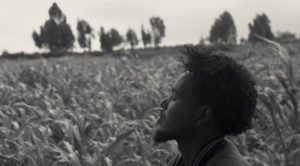 I thought “Wow, beautiful story”, but I thought maybe just Sufis in the little circles know about it, the spiritual people. Then I went and asked just random people “Do you know Azurkherlaini?” and everybody knows who is Azurkherlaini. Everybody has their own version. But mostly everyone thinks that Khedir, the one who drank from the water for eternal life, is still with us because he lived for eternity. So, now if a beggar comes and says “oh please, give me money and stuff”, if you don’t give… people feel like “oh my gosh, maybe that was my Khedir. It is always because Khedir is still with us”. He comes in a form like Mesquin, to give you an opportunity, to test you, an opportunity for you to practice generosity. So, these things are very alive within the idiosyncrasy of people. Even Mammy (short for Mohammed, the boy in the film) knew about Azurkherlaini! I thought “oh my gosh, this myth, legend or something is very alive in people’s idiosyncrasy. So, I thought it was part of this documentary. If you’re going to document, you can’t just replicate life… turn the camera on. I believe in creating because if I was to document you and if I was just to take a picture, that would not be an accurate documentation. There is so much inside. So, how do I trust that, that was my question, and the approach is in the film.
I thought “Wow, beautiful story”, but I thought maybe just Sufis in the little circles know about it, the spiritual people. Then I went and asked just random people “Do you know Azurkherlaini?” and everybody knows who is Azurkherlaini. Everybody has their own version. But mostly everyone thinks that Khedir, the one who drank from the water for eternal life, is still with us because he lived for eternity. So, now if a beggar comes and says “oh please, give me money and stuff”, if you don’t give… people feel like “oh my gosh, maybe that was my Khedir. It is always because Khedir is still with us”. He comes in a form like Mesquin, to give you an opportunity, to test you, an opportunity for you to practice generosity. So, these things are very alive within the idiosyncrasy of people. Even Mammy (short for Mohammed, the boy in the film) knew about Azurkherlaini! I thought “oh my gosh, this myth, legend or something is very alive in people’s idiosyncrasy. So, I thought it was part of this documentary. If you’re going to document, you can’t just replicate life… turn the camera on. I believe in creating because if I was to document you and if I was just to take a picture, that would not be an accurate documentation. There is so much inside. So, how do I trust that, that was my question, and the approach is in the film.
Another contradiction comes when the Imam says that it is a dark world. That is a complexity which I find very interesting in the film.
 Me too! Because all these elders and Imams, that’s all they do in the afternoon. Nobody leaves the house. Everybody is chewing. They don’t want their children to do it. The thing is, you have to be an example but they can’t do that. It’s to sit in the culture, in addiction but these contradictions co-exist. Every father, if you ask him, he is going to chew every afternoon, no doubt. Does he want his child to do that? No. This is what any father would say to his child, and yet, they would not be that example. Very few people and I met one. One father who stopped chewing because he got in a fight with his khat dealer and he hit him, and they took him to jail. And that made him quit. But that’s the only person that I met. I feel it is so important to bring those contradictions because those contradictions are very much alive. Anyone from Harar knows exactly what that represents because that is a challenge that parents are living with. How do you tell your daughter not to do it when you’re doing it?
Me too! Because all these elders and Imams, that’s all they do in the afternoon. Nobody leaves the house. Everybody is chewing. They don’t want their children to do it. The thing is, you have to be an example but they can’t do that. It’s to sit in the culture, in addiction but these contradictions co-exist. Every father, if you ask him, he is going to chew every afternoon, no doubt. Does he want his child to do that? No. This is what any father would say to his child, and yet, they would not be that example. Very few people and I met one. One father who stopped chewing because he got in a fight with his khat dealer and he hit him, and they took him to jail. And that made him quit. But that’s the only person that I met. I feel it is so important to bring those contradictions because those contradictions are very much alive. Anyone from Harar knows exactly what that represents because that is a challenge that parents are living with. How do you tell your daughter not to do it when you’re doing it?
It’s a kind of saying that belonging to humanity is to recognize the weakness of it.
The paradox exists within ourselves, there’s no black and white, there is an infinite tone of gray in between. For me, the way life exists is with all those contradictions, with all its complexities. I may not have the answers to everything but the contradiction and the complexity does exist and that’s the complexity that I wanted to bring to this documentary because it is not my job to find the solutions. I don’t have solutions or messages. But I want to present, I want to show what I see, what I find.
This type of consciousness is a possibility for us to connect with those people who are very far away.
 We are one. Human Beings. In different forms, different manifestations, we are one.
We are one. Human Beings. In different forms, different manifestations, we are one.
But that means also to accept the way they are.
Who am I to judge? Am I going through the hardships that people are going through? You don’t know anybody’s day today. You can’t know. I think that one of the things that you learn with time as a human being is precisely that: you can never know everything. Human beings, we’re secretive. We barely show anything about ourselves. So, to me, I don’t think it would be realistic to see a documentary that solves every single problem, because it is not true. There is no way. You cannot know everything but you can approximate and you can present what you see. Life hides. We hide. So, why present everything in bright daylight, and that is precisely what is happening with the light because to me everything is hidden. We hide so there is the shadows, there is the light, and of course, life causes you towards the light. For me, the way I grasp something about cinematography, I felt it could be brought to the light, is precisely this: there is fear. We have fear. The opposite of fear is love, but we are always at that intersection. So, the black and white for me was a way to be able to express that a little bit.
You tackle also the question of cinema, and the whole complexity of representation, as what is invisible is difficult to bring in cinema.
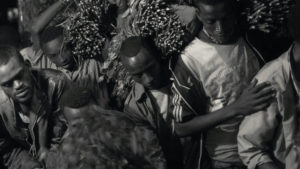 Humans, we have this thing about when you walk into a cinema, you see part of your humanity reflected back at you. It’s the place where we hide to see ourselves. We hide in that dark to see ourselves. It’s almost like when this guy Hashim Abdi (The elder man in the film who recites a poem and to whom Mohammed delivers Khat) created this dark place where no one can visit you. It is a place where you’re by yourself. And it’s true, when you’re sitting, at least for me, for the cinema viewer, it’s almost like a spiritual experience. I am having a communion with what’s happening and I am not consulting with anyone. It’s my communion between you and the film, no one can visit you there. When he was reciting his poem, which he chose to share at that moment, I was thinking a lot about the cinema, as a place of refuge. I felt this was my solution to how to communicate that visually.
Humans, we have this thing about when you walk into a cinema, you see part of your humanity reflected back at you. It’s the place where we hide to see ourselves. We hide in that dark to see ourselves. It’s almost like when this guy Hashim Abdi (The elder man in the film who recites a poem and to whom Mohammed delivers Khat) created this dark place where no one can visit you. It is a place where you’re by yourself. And it’s true, when you’re sitting, at least for me, for the cinema viewer, it’s almost like a spiritual experience. I am having a communion with what’s happening and I am not consulting with anyone. It’s my communion between you and the film, no one can visit you there. When he was reciting his poem, which he chose to share at that moment, I was thinking a lot about the cinema, as a place of refuge. I felt this was my solution to how to communicate that visually.
It is said that the lake is dry because people didn’t pray enough. I guess it is for these people, pertinent, coherent with their understanding of the world?
Mammy was recalling what Cheikh Elias had said to us the afternoon we spent with him. Cheikh Elias was chewing when suddenly, he started talking about the lake “We have sinned and look how our lakes are drying, look what’s happening”. Harar is a very spiritual place and Cheikh Elias was attributing the drying of our lakes to our sins, including ecological mismanagement and deforestation too. Recalling this, Mohammed said “I remember when Cheikh Elias said that this lake is drying because of our sin”. That was what this kid is remembering the Sheikh’s words. It is also, a kind of say, to show how our own ideologies, idiosyncrasies, philosophies, thoughts are living in the child’s mind, in the way the child processes it.
Your way of filming brings a strong sensuality.
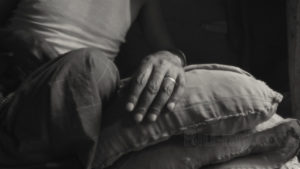 The way when I was living there and shooting this, it felt like there was this tension under all the time, whether it is political, whether it is love. I sensed resentment from women whose men spend all their money on the khat. That’s why they treat merkhana as if it was a woman. Many men refer to khat as “my wife”. I became friends with one of the officials from the tourism bureau in Harar, and he told me that in his office, many of the employee’s wives would come and collect the salary of their husbands directly from the office because because if they didn’t, the husbands would take their salary directly to their khat dealer to whom they were already deep in debt since they buy khat on credit. So, the wives ended up working an arrangement with the office managers.
The way when I was living there and shooting this, it felt like there was this tension under all the time, whether it is political, whether it is love. I sensed resentment from women whose men spend all their money on the khat. That’s why they treat merkhana as if it was a woman. Many men refer to khat as “my wife”. I became friends with one of the officials from the tourism bureau in Harar, and he told me that in his office, many of the employee’s wives would come and collect the salary of their husbands directly from the office because because if they didn’t, the husbands would take their salary directly to their khat dealer to whom they were already deep in debt since they buy khat on credit. So, the wives ended up working an arrangement with the office managers.
I didn’t want to go into those types of details, but there is that feeling, that resentment. One of the women is expressing it “oh, it’s been so long, we haven’t seen each other, touched each other, I want to get out of here”. Both women and men would recognize and identify with this feeling. I understand that the film expands on a very localized environment but I didn’t want to explain this to a western audience. I felt like as specific as these dynamics are, this is something that exists everywhere. The dynamics of addiction in a household are universal matters. There are human complexities that exist anywhere in the world. I wasn’t trying to explain away to a western audience. I trust that the people of this world would feel and understand this film without the didacticism and message sharing that accompany many documentaries from the global south as if they were addressed specifically to a Western audience.
How did you learn all that?
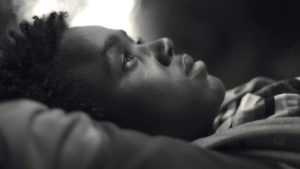
First of all, growing up there. When my grandmother visits us at home, we would prepare the room for her Bercha (The gathering of people to chew Khat) session. Bercha is when you get together for khat. We put the mattresses on the floor, the incense, the hookah, everything for my grandmother. So, it’s not an alien thing for me. I’ve always seen it as rituals of the elders. It never interested me. I was never allowed. I lived there until I was 16. It was never in my thoughts, but it exists in our lives. My grandmother, even in her own garden, grows tomatoes, pepper, Spinach, and a little khat for her own. So, it was never the fact that it was not a new thing for me. The fact that when I am talking about this, I feel like I am speaking of my grandmother, of my own. There is a certain degree of respecting dignity that you give to all the people that I am dealing with because I am speaking of ourselves. Many people knew my father when we lived there, because he was one of the very few surgeons in Harar at the time of the cold war. Especially many in the agrarian communities. Why? Because my father is also Oromo, he spoke the language. So, they always came to look for Dr. Hussein. When I returned, I was with my friends. My friend has a juice place, so I went. I was having a juice with her and the guy that supplies the mangoes, from the farms. We were talking and he was like “ah, it’s Dr. Hussein’s daughter … Mashallah! what happened”, and I was telling him about my film and asking I “what is going on with the khat?” And he was like “oh my gosh, I am going to take you to my farm!”.
So, he introduced me to Abu Ziad and because they knew my father, there was a big trust. I felt incredibly responsible to return that trust, to return that respect with which I was invited into the community and over the years, this trust was nurtured. Also, because there was an understanding that I had respect for the language as it also my grandmother’s language which I never learnt. Growing up in Ethiopia the working language was Amharic. Historically, the Oromo community has certainly been marginalized. I read that the Oromo language was actually banned from 1974 to 1991. So, returning was about learning what I didn’t know when I was growing up. I know that my grandmother would speak with my father in Oromo, but I never learned it. So, going back it’s almost like you start to research about yourself. When I found that, it was very important to me if I am speaking of the Oromo farmer to honor the language front and center. I wanted to preserve the ways of the language, the intonation, the way of expressing oneself, a language is a repository of so much. There was also the Harari language spoken in the walled city. Growing up, I had Harari, Oromo, Somali, Amhara friends but we all communicated in Amharic. So, while I was shooting, I didn’t understand what was being said but I knew what was happening because since everyone speaks Amharic, they would later on tell me more or less what was being said. This was also liberating because it de-centered the anecdote for me and I was alert to the vibe and mood of the space. It’s only when I hired a translator from Harar, one that speaks all the languages, Amharic, Harari, Oromo, Somali and the translation started to trickle in, I was very moved by the way people from the area chose the words to express themselves. It was a very painful process because the person that I hired in Harar was not a professional translator, he would do a few pages every month which he would translate to Amharic and I would translate that into English. Needless to say, it was a very long process but it was one that was very worth it to me.
The question of the rights of the Oromo people is present in the film. What was the situation in Ethiopia when you shot it?
Well, it was a process because I started this film around 2010, 2011, and I didn’t know about the history of the Oromo struggle. People were very guarded about what they shared at the beginning. Then, around 2014, 2015, that’s when Oromo peaceful protests started in response to the government’s “master plan” to expand the city of Addis Ababa to Oromia land. Historically there has been strong resistance against subsequent regime’s land grabbing schemes, and this time around the Qeeroo and Qarrees, the Oromo youth, emerged in response to this land grabbing and launched courageous peaceful protests that they sustained for 3 years, until 2018. They were met with the government’s iron fist, killing over 5 thousand students and incarcerating over 40 thousand. I talked to these young men you see in the film who were actually incarcerated and released when the administration changed. That scene was filmed at the end of 2018.
It was going to be wrong…
 Yes! Even though, at the beginning, the new prime minister freed a lot of political prisoners, won the nobel prize, he got peace with Erythrean and nobody knew why. Then, he invited all the blacklist journalist from all abroad like “come back to the country there is a free speech”. Once he got all of that, he started to backpedaling, and a lot. These youth were feeling the disappointment and they were feeling quite betrayed. So, that was the center of it at the moment of most of these youths. I feel that it is literally next to the university. They literally took a break, because I asked them “Would you like to speak about?”. For a lot of them it was not safe because people were being persecuted. As a matter of fact, two of those men, one of them was in jail and one of them was from Kenia, he had to run away. But these ones… they said they wanted to speak. So, I waited from them at this place because I said “where would you like to meet?” and they said “oh, there is this tree, and we can go under”, and I said fine. I came in the morning. I was waiting for them there. They came, I sat down, they wanted to speak with Abba Gada.
Yes! Even though, at the beginning, the new prime minister freed a lot of political prisoners, won the nobel prize, he got peace with Erythrean and nobody knew why. Then, he invited all the blacklist journalist from all abroad like “come back to the country there is a free speech”. Once he got all of that, he started to backpedaling, and a lot. These youth were feeling the disappointment and they were feeling quite betrayed. So, that was the center of it at the moment of most of these youths. I feel that it is literally next to the university. They literally took a break, because I asked them “Would you like to speak about?”. For a lot of them it was not safe because people were being persecuted. As a matter of fact, two of those men, one of them was in jail and one of them was from Kenia, he had to run away. But these ones… they said they wanted to speak. So, I waited from them at this place because I said “where would you like to meet?” and they said “oh, there is this tree, and we can go under”, and I said fine. I came in the morning. I was waiting for them there. They came, I sat down, they wanted to speak with Abba Gada.
Abba Gada is the Oromo indigenous democratic system of governance and they wanted to speak to a respected elder, representative of this system. So, Abba Gada was there and they were having almost a space of communion with each other. I don’t understand but I can sense and feel what’s going on in their speech, in their tone. All of them were speaking. I ended up choosing a couple of people that were speaking because I can’t have everything in the film. But, in essence, that is the tone in which a lot of the youth are experience in Ethiopia today, especially in the Oromo, because there is a lot of melancholic because the war coming, they knew something was coming. When there was the war with Tigray, they knew they were coming for them after. I don’t think anyone knew we would be in a civil war this bloody for 2 years, because it’s been 2 years now, but no one trusted that this was going the right way. Some people are like “It’s melancholic…” because I am transmitting the sense which they were living, this uncertainty. It’s a consent like ageing. How’s going to manifest next. So, I try to bring that through this cinematic language, and kind of transmit that melancholia, that uncertainty, that state of where the ground bind you shaky, especially that uncertainty. Nothing is clear. So, why should the film not be that? How can we bring that. Those were the conversations that we would have with the editors, for example.
How did you let the people collaborate to the film in those places where camera is not welcome?
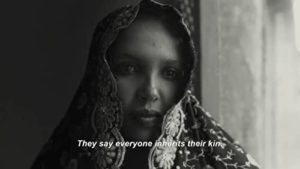 I have to say, because in the way that you offer respect. I wasn’t coming very prepotent and say “I am here to shoot something”. There were just me and the camera. Just one person. I was wearing the accepted garb and I would talk to the people, but also, the way I was approaching people was through everyone. By then “I know so and so”, “Oh you met so and so…oh you know the farmer… oh you know Mustapha?”. Mustapha, for example, was one of the very well-known kings of Aouday, maroquin. Mustapha and his wife have invited me to their home. I’ve slept many nights because when I was shooting in the night market it was 2, 3 o’clock in the morning. That market doesn’t start the movement until around that time. So, of course, then I would go to their home and sleep. It was building a lot of relationships that would also bring trust because if Mustapha brings me with somebody, obviously it’s because Mustapha says “okay, she’s good”. That’s kind of how it worked and for me the intentionality in which I was shooting was also with that respect that they were bestowing upon me in return. Also, in the way I was shooting, I feel it’s a very intuitive process and informed because intuition uses intellect as well. I spent enough time informing myself and studying to now come and shoot intuitively. Because all of these things that I learnt I would find it in a frame, in a shot, in a certain action, in the hands. I don’t think I would be able to make this film if I had a crew that I had to work with. It was precisely because it was non-invasive. It was just me with my little camera. Most of the time I was on the tripod. I had one rig that I could’ve custom-made, something that could be not very heavy. I think that’s how I found the way inside those places that to me represent our eternal landscapes.
I have to say, because in the way that you offer respect. I wasn’t coming very prepotent and say “I am here to shoot something”. There were just me and the camera. Just one person. I was wearing the accepted garb and I would talk to the people, but also, the way I was approaching people was through everyone. By then “I know so and so”, “Oh you met so and so…oh you know the farmer… oh you know Mustapha?”. Mustapha, for example, was one of the very well-known kings of Aouday, maroquin. Mustapha and his wife have invited me to their home. I’ve slept many nights because when I was shooting in the night market it was 2, 3 o’clock in the morning. That market doesn’t start the movement until around that time. So, of course, then I would go to their home and sleep. It was building a lot of relationships that would also bring trust because if Mustapha brings me with somebody, obviously it’s because Mustapha says “okay, she’s good”. That’s kind of how it worked and for me the intentionality in which I was shooting was also with that respect that they were bestowing upon me in return. Also, in the way I was shooting, I feel it’s a very intuitive process and informed because intuition uses intellect as well. I spent enough time informing myself and studying to now come and shoot intuitively. Because all of these things that I learnt I would find it in a frame, in a shot, in a certain action, in the hands. I don’t think I would be able to make this film if I had a crew that I had to work with. It was precisely because it was non-invasive. It was just me with my little camera. Most of the time I was on the tripod. I had one rig that I could’ve custom-made, something that could be not very heavy. I think that’s how I found the way inside those places that to me represent our eternal landscapes.
African Film Festival Lausanne, August 2022
(translation will be published on the Africultures website)
